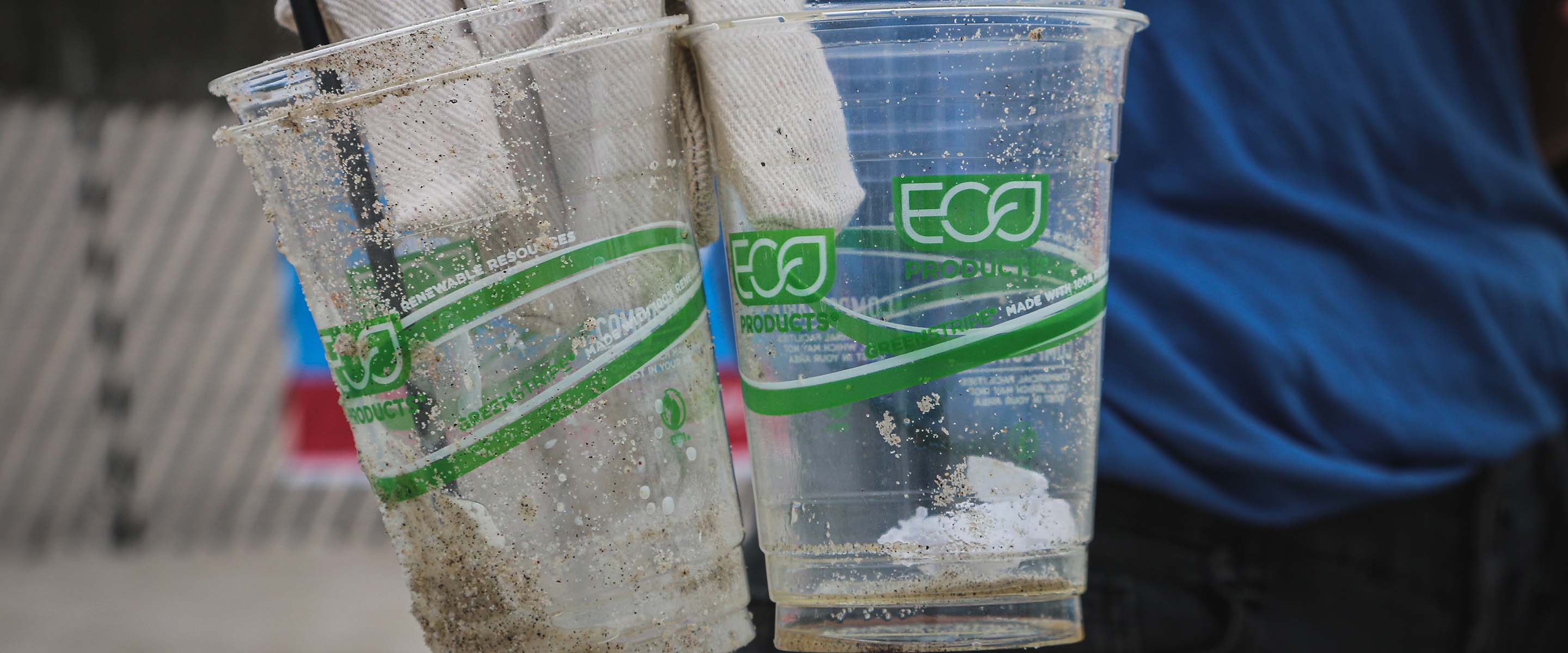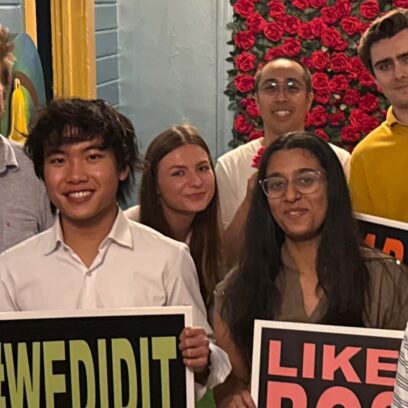Common Greenwashing Terms & Examples


🌍 Carbon markets can feel overwhelming—fragmented data, limited transparency, and conflicting advice make it hard to know where to start. In this webinar, our experts give a clear, practical introduction to the VCM.
Learn about new and emerging greenwashing tactics, including strategies to help you avoid making misleading environmental claims for your organization.
In our previous blog post on greenwashing, we acknowledged the rising societal awareness around environmental issues and the surge in corporate environmental commitments. The landscape of greenwashing, full of misleading tactics but also, in some cases, well-intentioned efforts that went awry or were inaccurate, has grown increasingly complex since then. More and more companies are making claims, some of which are not always accurate, and while calling something greenwashing, or any of the new terms introduced here-in, can sometimes be used as part of a well-reasoned argument, it’s increasingly used as an easy catch-all term to suggest nefarious communications without the need to dig deeper. Simply labeling something as greenwashing in this way can be dismissive, and it gives people a pass to not talk about the problems or the challenges.
This blog post seeks to build upon our prior post by introducing new terms that have emerged as subsets of greenwashing. Our objective is to help you gain an understanding of these deceptive strategies and to arm you with the knowledge and tools needed to avoid these pitfalls for your organization. Disclosing your actions with traceability and transparency is important, and fear of accusations of greenwashing should not hinder businesses from stating their progress.
New and Emerging Greenwashing Tactics
Let’s start by unmasking some of the newer greenwashing terms and tactics that have emerged:
- Greenwashing (or green washing): Misleading promotion of products or policies as environmentally friendly when in reality, they are not—often exaggerating the benefits while hiding the true or non-existent environmental impact.
- Greenhushing (or green hushing): This tactic refers to a deliberate silence about sustainable goals to avoid the accusation of greenwashing, potentially obscuring valid sustainability efforts and misleading investors.
- Greenshifting (or green shifting): This involves transferring responsibility to consumers in a subtle blame game. By highlighting consumer choices rather than their corporate sustainability strategies, businesses can divert attention from their own environmental responsibilities.
- Greencrowding (or green crowding): Here, a company aligns itself with the least ambitious sustainability pace in a group, showing a lack of push for significant advancements and stifling innovation.
- Greenlighting (or green lighting): This involves spotlighting a particularly environmentally friendly aspect of a company’s operations to divert attention from less sustainable practices elsewhere in the company.
- Greenlabelling (or green labelling): Greenlabelling involves the deceptive use of eco-labels to falsely claim a product or service is more sustainable than it actually is, misleading consumers.
- Greenrinsing (or green rinsing): This involves businesses frequently changing ESG targets without genuine accomplishment, thereby eroding trust and making it hard for stakeholders to track their progress.
- Carbonwashing: Misleading claims that overstate the carbon neutrality or reductions achieved by a company.
How to Avoid Misleading Environmental Claims
Greenwashing is a complex concept, but it can be avoided with the right strategies. To help businesses communicate their authentic environmental efforts, below is a table that outlines key greenwashing terms, gives practical examples, and explains how the Federal Trade Commission’s (FTC) Green Guides, which are currently under review, and CarbonBetter can be used to counter each greenwashing tactic.
Consider this table as a starting point to help guide you through the often-confusing greenwashing landscape:
How the FTC Green Guides and CarbonBetter Can Help You Make Accurate Environmental marketing claims
| Term | Definition | Example | FTC Green Guides | CarbonBetter Services |
| Greenwashing | Advertising products as environmentally friendly in a misleading way | A fossil fuel company advertising its small investment in renewable energy, while most of its business still depends on fossil fuels | Offers guidance to prevent deceptive environmental marketing claims | Develop a comprehensive sustainability strategy that accurately measures environmental impacts |
| Greenhushing | Keeping quiet about green initiatives to avoid scrutiny | A company has a successful recycling program but doesn’t promote it for fear of scrutiny | Encourages transparency and honesty in marketing communications | Highlight and share your sustainability achievements to build loyalty and promote transparency |
| Greenshifting | Companies deflecting environmental responsibility onto consumers | A company emphasizing the carbon footprint of their product’s usage without addressing their own manufacturing processes | Encourages companies to accept their environmental responsibilities and avoid the consumer blame game | Assess your environmental impacts holistically, and create a comprehensive decarbonization playbook |
| Greencrowding | Slow to adopt green initiatives due to industry norms | A company adhering to the minimal environmental standards set by competitors | Encourages proactive action over bare minimum compliance | Create a decarbonization playbook that establishes your organization as a leader in your space |
| Greenlighting | Spotlighting a single green initiative to distract from less sustainable practices | A company heavily promotes its recycling program while hiding high carbon emissions in manufacturing | Encourages comprehensive transparency about a company’s overall environmental impact | Share a holistic and transparent view of your sustainability journey, highlighting all your initiatives and achievements |
| Greenlabelling | Misusing or creating fake labels | A product carrying a generic ‘eco-friendly’ label without clear and verified backing | Guides on substantiating claims and using labels | Help accurately communicate progress to stakeholders, and support in getting third-party certifications |
| Greenrinsing | Changing ESG targets without genuine progress | A company frequently updates its carbon neutral target date without making significant steps towards achieving it | Guides companies on correct label usage | Set realistic sustainability goals, define measurable targets, and accurately track environmental progress |

FW Sustainability Report
Learn more about how Fierce Whiskers has made sustainable choices every step of the way by downloading its full sustainability report.
By referencing this table as a starting point, businesses can strengthen their defense against greenwashing and ensure their environmental claims are credible and verifiable. The end goal is simple yet significant—every green claim should be accurate and authentic and should have data to back it up.
Regulatory Landscape: Responding to Greenwashing
With a growing emphasis on corporate environmental responsibility, the regulatory landscape is quickly shifting to match. The European Union (EU) has recently proposed a new law "to stop companies from making misleading claims about environmental merits of their products and services." This directive would standardize green claims, aiming to eradicate misleading or false assertions about the environmental benefits of products and services. The proposed law would ensure that consumers receive reliable, verifiable, and comparable information, aiding them in making environmentally conscious decisions.
This new law, which aligns with the principles of the United States (US) Federal Trade Commission's (FTC) Green Guides, underscores the increasing importance of transparency and accuracy in making environmental claims. As these changes unfold, it's clear that businesses will need to adjust their sustainability communications strategies, moving away from unsupported or vague claims and towards accurate, measurable, and verifiable disclosures of their environmental impact and sustainability initiatives. That's where we can help.
Conclusion
Trying to make accurate and honest claims about the environmental impacts of your business can be challenging to get right. However, by maintaining data accuracy—and by emphasizing honesty, transparency, and traceability—you can get your organization started in the right direction today. If you need help accurately quantifying your environmental impacts, tracking your progress, and telling your organization’s story, we can help! Contact us to get started.
The pressures of conforming to market expectations and portraying an environmentally responsible image often drive companies towards these practices. It could be due to a lack of resources, commitment, or understanding to implement genuine sustainability changes, or the desire to keep pace with industry trends without standing out too much. These practices might offer temporary advantages, but they are not sustainable in the long run. True sustainability, transparency, and open communication about environmental efforts are ultimately far more beneficial for establishing a strong and credible brand in the eyes of stakeholders.
Companies might practice greenhushing for a variety of reasons, such as fear of critique for not doing enough or wanting to avoid the spotlight until their efforts have resulted in significant change. However, open communication about environmental initiatives can enhance corporate reputation and stakeholder trust. A company can overcome greenhushing by working with experts like CarbonBetter to create a strategic communication plan that showcases its sustainability journey and progress in a transparent and engaging way.
Companies can avoid green crowding by setting their own ambitious sustainability goals and strategies, rather than just checking boxes to meet industry norms. Collaborating with sustainability consultants like CarbonBetter can help in designing and implementing a unique sustainability strategy that aligns with the company's mission and values. This proactive approach can demonstrate true environmental commitment to stakeholders and differentiate the company from competitors.
Companies can celebrate their environmental accomplishments in a balanced and transparent way. Rather than focusing solely on their successes, they should present a comprehensive picture of their sustainability efforts. This includes acknowledging the challenges they face and outlining the steps they are taking to address these issues. In doing so, they can foster trust and show commitment to continuous improvement, while still being able to showcase the progress they've made.
United States (US) businesses operating in the European Union (EU) should familiarize themselves with the proposed directive on green claims and ensure their marketing and product claims comply. It is also advisable to engage with experts who understand the legislation and can guide them through any required changes to their sustainability reporting and communication. Contact us today to get started.


